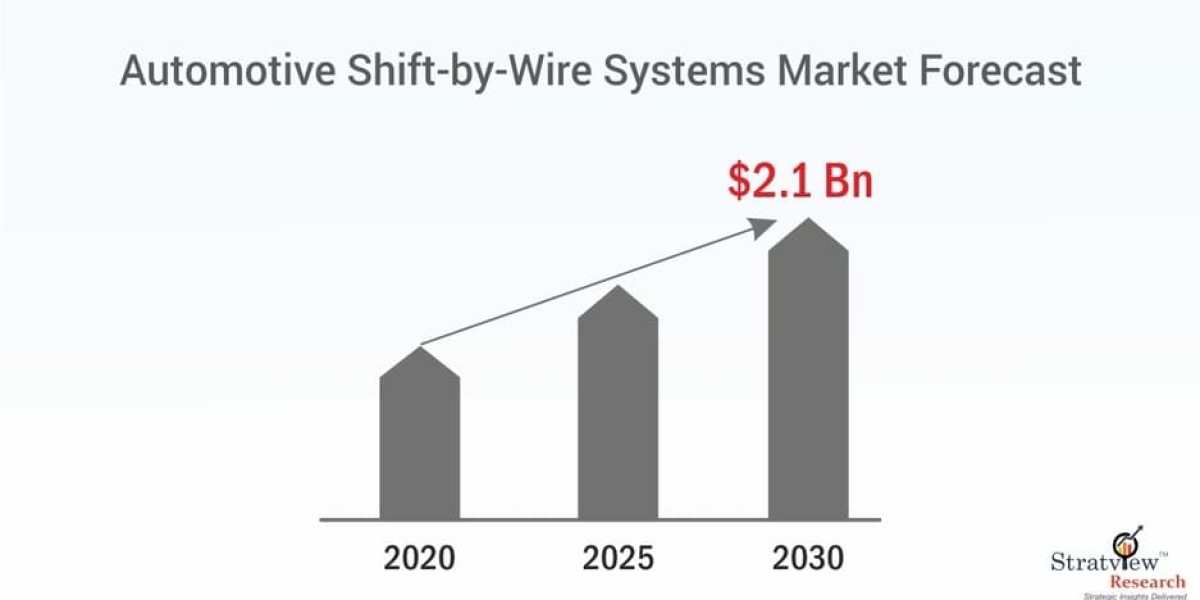Stratview Research believes that the Automotive Shift-By-Wire Systems Market is projected to offer healthy growth opportunities and is likely to reach US$ 2,139.5 million in 2030.
The automotive industry is no stranger to innovation and technological advancements. From self-driving cars to electric vehicles, the landscape of our roads is continuously evolving. Among these transformative changes, one technology that often goes unnoticed but plays a vital role in improving both safety and driving experience is the automotive Shift-By-Wire (SBW) system. In this article, we'll explore the significant revolution brought about by Drive-by-Wire technology and its impact on the automotive industry.
The Shift-by-Wire Revolution
In the traditional setup of an automobile, the connection between the driver and the vehicle's transmission was mechanical and direct. A driver would physically move a gear lever to engage a gear, whether it's park, reverse, neutral, drive, or other positions. While this system has served us well for decades, it had its limitations. Enter Shift-by-Wire (SBW) systems.
SBW, commonly known as Drive-by-Wire, replaces the mechanical linkage between the driver's input and the vehicle's transmission with electronic sensors and actuators. This fundamental change in the way we control gears and shifting brings several benefits that are driving a revolution in the automotive industry.
Improved Precision
Drive-by-Wire technology enables precise and consistent gear shifting. The system translates the driver's input into electronic signals, resulting in a smoother and more accurate gear change. This not only enhances the driving experience but also reduces wear and tear on the transmission.
Enhanced Safety
Drive-by-Wire systems provide an additional layer of safety. They can be integrated with other safety systems to prevent unintended gear shifts or to ensure that the transmission is in the appropriate gear for the vehicle's speed, reducing the risk of accidents.
Optimized Fuel Efficiency
By allowing the vehicle's onboard computer to optimize gear shifting, Drive-by-Wire technology can contribute to improved fuel efficiency. The system can seamlessly adjust gears to match driving conditions, maximizing power and minimizing fuel consumption.
Adaptability and Customization
One of the key advantages of Drive-by-Wire technology is its adaptability. Automakers can customize shifting patterns and tailor them to different driving styles and vehicle models. This flexibility allows for a more personalized driving experience.
Integration with Autonomous Driving
As autonomous driving technology continues to advance, Drive-by-Wire systems become crucial. In fully autonomous vehicles, there may not even be a driver's seat, let alone a mechanical gear lever. The shift-by-wire system is a bridge to this autonomous future.
Market Growth and Future Prospects
The market for automotive Shift-By-Wire systems is on the rise, driven by the need for improved fuel efficiency, safety, and driving comfort. As automotive technology continues to advance, we can expect further innovation in SBW systems. Here are some key trends to watch for:
Integration with Hybrid and Electric Vehicles: As the automotive industry moves toward electrification, SBW systems will play a crucial role in optimizing power delivery and enhancing the electric driving experience.
Enhanced Driver Assistance: Drive-by-Wire systems will become increasingly integrated with advanced driver assistance systems, further improving safety and control.
Transition to Fully Autonomous Vehicles: As self-driving cars become more common, the role of Drive-by-Wire technology will expand, enabling vehicles to shift gears, or even eliminating the need for physical gear shifting components entirely.
Conclusion
Drive-by-Wire technology represents a quiet yet impactful revolution in the automotive industry. By replacing mechanical gear shifting with electronic precision, these systems are enhancing safety, driving experience, and fuel efficiency. As we continue to embrace new technology and move closer to a future with autonomous vehicles, the role of Shift-By-Wire systems will only grow, shaping the way we drive and the vehicles we drive for years to come. Drive-by-Wire is not just a technological leap; it's a driving force behind the automotive evolution.









